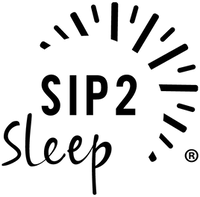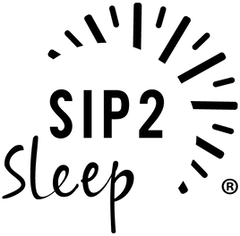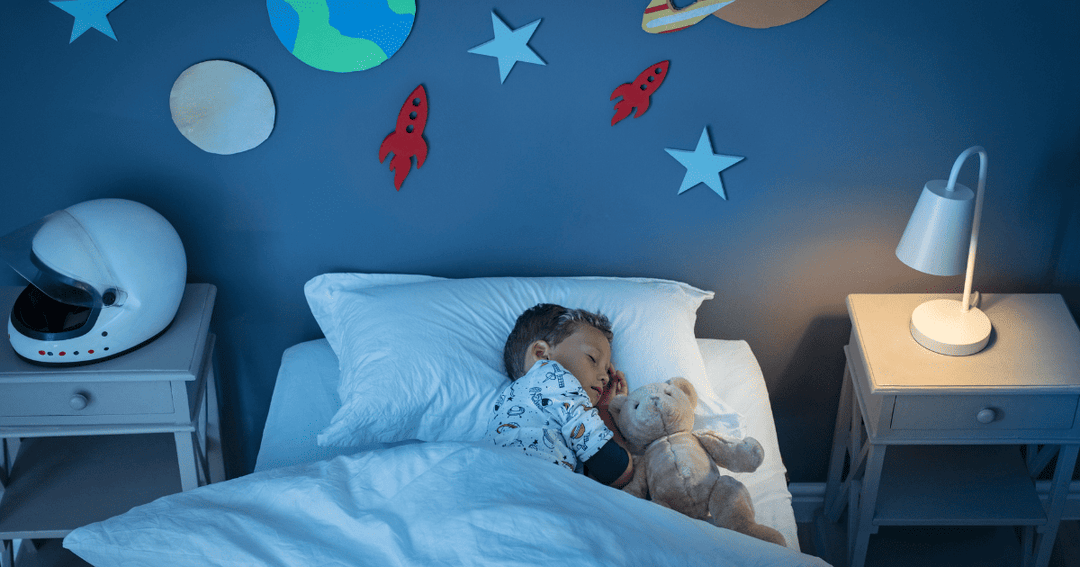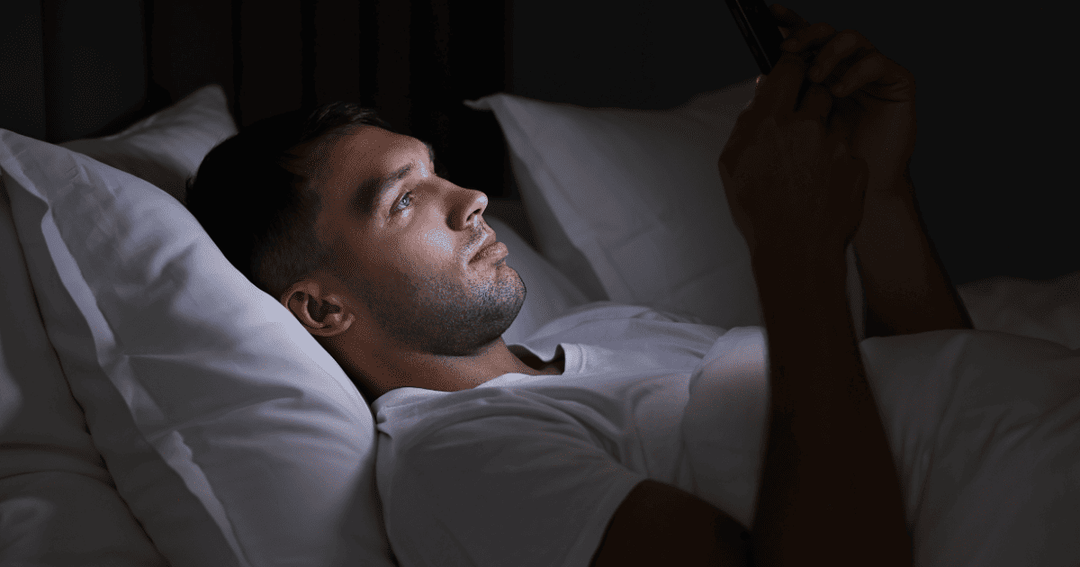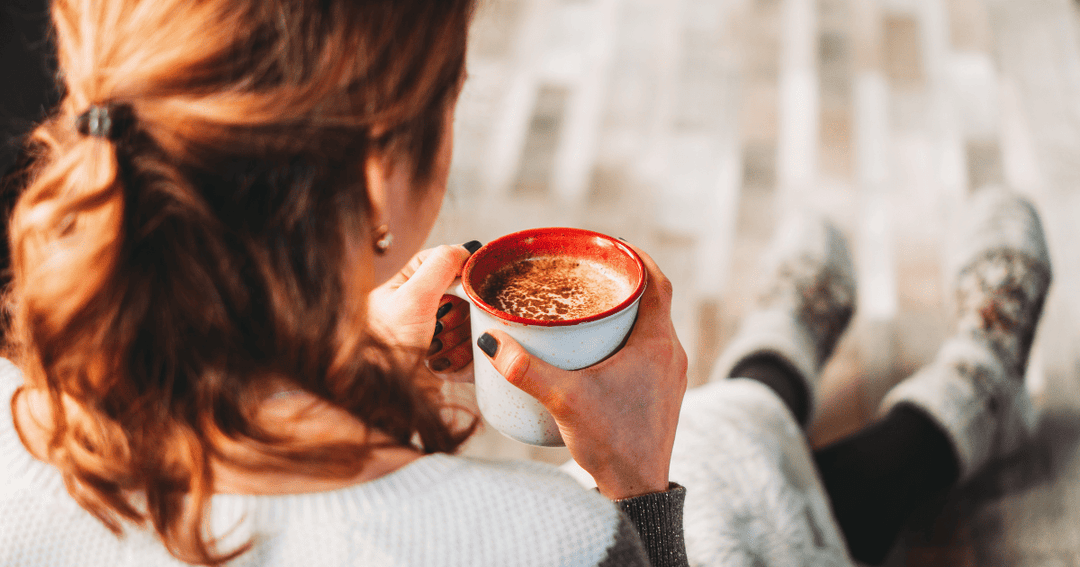What Is Blue Light and How Does It Affect Your Sleep?
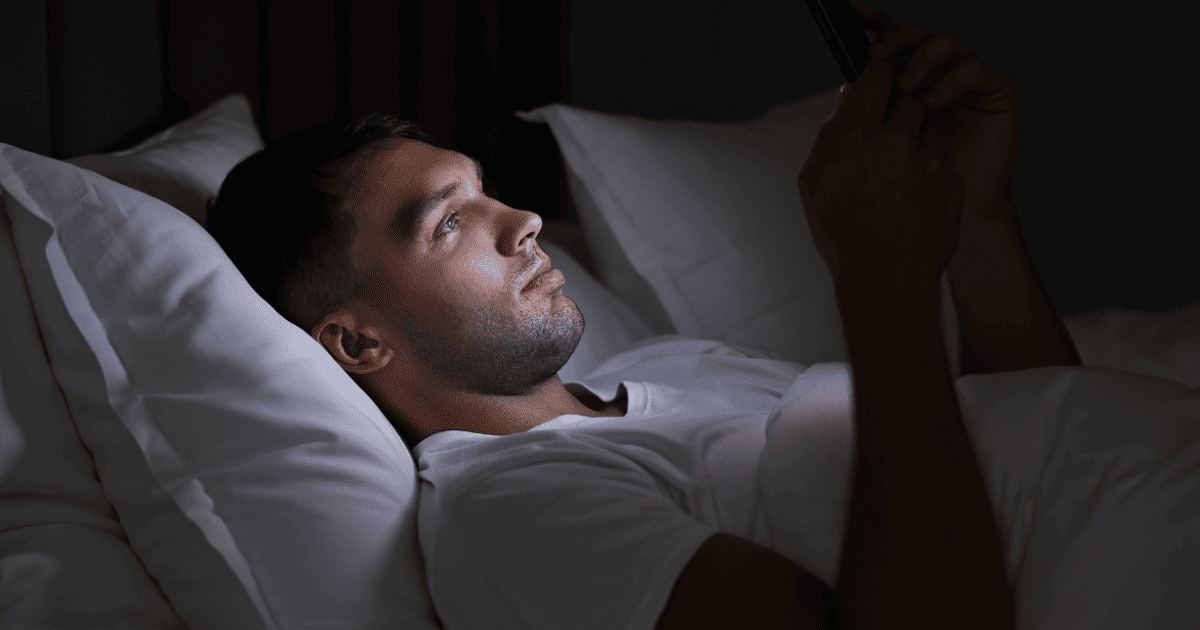
Key Takeaways
-
Blue light is a high-energy wavelength found in sunlight and digital screens.
-
Exposure to blue light in the evening can disrupt your body’s natural sleep cycle by suppressing melatonin, a hormone that helps you fall asleep.
-
The most practical way to protect your sleep is to limit screen time 1–2 hours before bed and use dim, warm lighting at night.
You’ve probably heard that you shouldn’t use your phone before bed. Maybe a friend mentioned it, or your doctor suggested putting away devices at least an hour before bedtime, warning that blue light from screens can disrupt your sleep.
But what exactly is blue light? And how much does it really affect your ability to fall and stay asleep?
With nearly 9 in 10 Americans using electronic devices in the hour before bed, understanding blue light’s impact on sleep is more important than ever.
What Is Blue Light?
Blue light is a specific part of the visible light spectrum, with wavelengths between about 450 and 495 nanometers [2]. While sunlight is the strongest source of blue light, most people now encounter it daily from artificial sources like LED lights, televisions, smartphones, tablets, and computer screens.
What makes blue light unique isn’t just its color—it’s the effect it has on the brain. Blue light is especially effective at signaling to our brain that it’s daytime. This is because of specialized cells in our eyes called intrinsically photosensitive retinal ganglion cells (ipRGCs), which contain the light-sensitive pigment melanopsin. When these cells detect blue light, they send signals to the body’s master clock in the brain—the suprachiasmatic nucleus (SCN)—that regulate our circadian rhythms, or 24-hour body clock [3].
During the day, blue light exposure keeps us alert, boosts mood, and helps regulate the release of hormones such as cortisol and melatonin [4] [5]. But at night, especially after sunset, continued exposure can confuse the brain’s internal clock and interfere with natural sleep cycles.
Why Is Blue Light a Problem for Sleep?
The problem with blue light isn’t its existence—it’s the timing. Your body is designed to wind down and produce melatonin when it gets dark. However, when you expose yourself to bright blue-rich light at night, you send the brain a false signal that it’s still daytime, which delays melatonin release and makes it harder to fall asleep.

Source: Electric Lighting, Adolescent Sleep and Circadian Outcomes, and Recommendations for Improving Light Health
Research has shown that exposure to bright light (especially blue light) at night can:
-
Delay the onset of melatonin: Even moderate exposure to blue-enriched light in the evening can suppress melatonin production and shift your sleep-wake cycle later by up to 90 minutes in some studies [6].
-
Reduce overall melatonin levels: The suppression effect can be substantial; some studies report reductions in melatonin of up to 50% or more under bright, blue-rich light [7].
-
Increase alertness at night: Blue light activates brain areas that promote wakefulness and can make it more difficult to “switch off” before bed [7].
-
Decrease total sleep time: Delayed sleep onset leads to less total sleep, poorer sleep quality, and less time in deep and REM sleep stages—critical for feeling rested and rejuvenated [7].
The effects are strongest when blue light exposure happens in the last one to three hours before your intended bedtime. Using smartphones, tablets, or computers during this period has been repeatedly linked to increased sleep latency (the time it takes to fall asleep), reduced sleep duration, and lower sleep quality.
How Much Blue Light Are You Actually Getting?
Most people associate blue light with screens, but the sun is by far the most powerful source. On a typical day outdoors, you’ll receive dozens of times more blue light from sunlight than from your phone or laptop—even in the shade [8]. For reference:
-
Daylight exposure can be over 25 times more intense in blue light than indoor room lighting.
-
A phone or tablet held close to the face in a dark room can still emit significant blue light directly into your eyes, particularly when used late at night.
It’s important to understand that not just the color (wavelength), but also the brightness (intensity), duration of exposure, and how close the source is to your eyes all contribute to the effect on your circadian rhythm. Bright, high-contrast screens used up close and for longer periods have the most pronounced impact.
Also Read: Research Shows Phone Use Before Bed Increases Insomnia Risk by Over 50% and How to Fix It
When Is Blue Light Most Harmful to Sleep?
The timing of blue light exposure matters just as much as the amount. Blue light is most disruptive to sleep when you encounter it in the evening or at night, particularly in the hour or two before bed. This is when your body’s melatonin production should be ramping up in preparation for sleep.
Key factors that make blue light more harmful at night [7]:
-
Timing: Blue light after sunset can shift your circadian rhythm later, making it harder to fall asleep and wake up at your desired times.
-
Intensity: Brighter screens or lights have a stronger effect.
-
Duration: The longer you’re exposed, the greater the impact.
-
Proximity: Handheld devices (phones, tablets) used close to the face are more potent than screens viewed at a distance.
If you regularly use screens or bright lights before bed, you may find yourself falling asleep later, sleeping less deeply, and feeling less refreshed in the morning—even if you’re technically in bed for eight hours.
What Happens When You Use Screens Before Bed?
Using screens in the hour or two before bedtime exposes your eyes to high levels of blue light right when your body should be winding down. This light signal suppresses melatonin, increases alertness, and shifts your internal clock later [7].
Studies have found that:
-
Just 30–60 minutes of smartphone or tablet use at night can delay melatonin onset by 30–60 minutes.
-
People who use devices right before bed are more likely to report trouble falling asleep, poorer sleep quality, and daytime sleepiness.
It’s not just the light from screens that matters—the content you’re viewing plays a role, too. Interactive activities like gaming or responding to emails can increase arousal, stress, or emotional activation, making it even harder for your brain to power down for sleep [10].
Even watching TV in a dark room or using a computer for work can have significant effects if done late into the evening, especially if the room is otherwise dim or dark.
Also Read: This Common Habit Makes Insomnia Worse
Which Devices Disrupt Sleep the Most?
Not all screens are equal when it comes to disrupting sleep. Factors such as screen size, brightness, distance from the eyes, and usage patterns influence how much blue light reaches your retina.
-
Smartphones and tablets: These handheld devices are typically used close to the face, increasing blue light intensity. Their portability also means you’re more likely to use them in bed or late at night.
-
Laptops and computers: Larger screens used at a desk may be set at high brightness levels. Evening work sessions or gaming marathons can extend blue light exposure late into the night.
-
Televisions: TVs are often viewed from a distance, which reduces blue light intensity. However, watching TV in a dark room still provides enough blue light to affect melatonin, especially with larger or newer high-brightness models.
-
LED lighting: Modern energy-efficient LED bulbs can emit more blue light than older incandescent bulbs, especially if set to “cool” or “daylight” tones.
The most disruptive devices are typically those used up close, at high brightness, and during the last 1–2 hours before sleep. If you find it difficult to avoid screens altogether, try to at least reduce brightness and keep them farther from your face as bedtime approaches.
Do Blue-Light Blocking Glasses and Night Modes Really Work?
Many devices and apps now include “night mode” or “blue light filter” settings, which reduce the amount of blue light emitted by screens. There are also glasses marketed as “blue-light blocking” that claim to protect sleep.
How effective are these tools?
-
Night mode and screen filters: These settings shift screen colors toward warmer (yellow/orange/red) tones. Some studies suggest they reduce blue light exposure by 30–50%, but the overall effect on sleep is modest [11]. While these settings may help, they do not completely eliminate blue light or its impact on melatonin.
-
Blue-light blocking glasses: Glasses with amber or orange lenses can block a significant portion of blue wavelengths, and some small studies show they may help protect melatonin and improve sleep quality for people who must use screens at night [12]. However, evidence is still mixed, and these glasses are not a guaranteed fix for everyone.
In summary, night mode and blue-light blocking tools can provide partial protection, but they are not substitutes for limiting screen time or bright light exposure in the evening.
What Can You Do to Protect Your Sleep from Blue Light?
You don’t have to eliminate all screens or LED lighting from your life to protect your sleep. Instead, focus on the timing, brightness, and color of your light exposure, especially in the hours leading up to bedtime.
Simple steps to reduce blue light exposure at night:
-
Limit screen time 1–2 hours before bed. This is the most effective step for most people. If possible, avoid devices altogether for at least 60 minutes before sleep.
-
Use dim, warm lighting in the evening. Switch to lamps or bulbs with a “warm white” or amber color temperature (ideally 2700K or lower).
-
Turn on night mode or blue light filter. Most phones, tablets, and computers now offer these features. Enable them well before bedtime.
-
Reduce screen brightness. Manually dim your devices and avoid high-contrast, bright images late at night.
-
Increase distance from screens. Hold phones or tablets farther from your face, and use larger text or zoom settings if needed.
-
Consider blue-light blocking glasses if you must use screens at night, but don’t rely on them alone.
-
Keep bedrooms dark. Block outside light with blackout curtains and avoid turning on overhead lights if you wake up at night.
-
Get bright light in the morning. Spend time outdoors or near a window shortly after waking up to help anchor your circadian rhythm and counteract any nighttime phase delays.
If avoiding screens before bed isn’t realistic for your lifestyle, aim to at least dim your devices, enable night mode, and limit stimulating content (such as games or scrolling your social media feeds) in the final hour before sleep.
Also Read: 13 Tips to Fall Asleep Faster
Are There People Who Are More Sensitive to Blue Light?
Yes, sensitivity to blue light’s effects on sleep varies [9].
-
Children and teens have larger pupils and clearer eye lenses, allowing more blue light to reach the retina. They are generally more sensitive to melatonin suppression and circadian shifts.
-
Night shift workers or people with delayed sleep phase (“night owls”) are at higher risk for sleep disruption from evening blue light. For these groups, it’s especially important to keep evenings as dim as possible and use bright morning light on free days to help shift the body clock earlier.
-
Older adults may have slightly reduced blue light sensitivity due to natural yellowing of the eye’s lens, but they are not immune to the effects—late-night device use can still disturb sleep.
Also Read: How to Sleep Better as You Get Older
Can Blue Light Exposure Cause Long-Term Health Problems?
Chronic sleep disruption and circadian misalignment from artificial light exposure are linked to more than just feeling tired. Research suggests that ongoing interference with the natural sleep-wake cycle may be associated with:
-
Increased risk for insomnia and mood disorders
-
Higher risk for metabolic and cardiovascular issues (like weight gain and high blood pressure)
-
Impaired cognitive performance and memory
-
Weakened immune system
While more research is needed on the long-term impact of blue light specifically, experts agree that preserving healthy sleep is critical for overall well-being.
The Bottom Line
Blue light is a natural part of daily life and plays a key role in keeping us alert and synchronized with the world around us. But with so much artificial blue light from screens and LED lighting at night, it’s easier than ever to throw off your body’s internal clock and make falling asleep more difficult.
If you’re still having trouble sleeping even after adjusting your evening screen time and lighting, take a closer look at your overall bedtime routine and sleep hygiene, or consider reaching out to a healthcare provider for additional support. Natural sleep supplements like Sip2Sleep® can be a helpful addition to your routine when used alongside smart light management and a consistent sleep schedule.
References
-
Zhong C, Masters M, Donzella SM, Diver WR, Patel AV. Electronic Screen Use and Sleep Duration and Timing in Adults. JAMA Netw Open. 2025 Mar 3;8(3):e252493. doi: 10.1001/jamanetworkopen.2025.2493. PMID: 40146105; PMCID: PMC11950897.
-
Cougnard-Gregoire A, Merle BMJ, Aslam T, Seddon JM, Aknin I, Klaver CCW, Garhöfer G, Layana AG, Minnella AM, Silva R, Delcourt C. Blue Light Exposure: Ocular Hazards and Prevention-A Narrative Review. Ophthalmol Ther. 2023 Apr;12(2):755-788. doi: 10.1007/s40123-023-00675-3. Epub 2023 Feb 18. PMID: 36808601; PMCID: PMC9938358.
-
Pan, D., Wang, Z., Chen, Y. et al. Melanopsin-mediated optical entrainment regulates circadian rhythms in vertebrates. Commun Biol 6, 1054 (2023). https://doi.org/10.1038/s42003-023-05432-7
-
Faraut, B., Andrillon, T., Drogou, C., Gauriau, C., Dubois, A., Servonnet, A., Van Beers, P., Guillard, M., Gomez-Merino, D., Sauvet, F., Chennaoui, M., & Léger, D. (2020). Daytime Exposure to Blue-Enriched Light Counters the Effects of Sleep Restriction on Cortisol, Testosterone, Alpha-Amylase and Executive Processes. Frontiers in Neuroscience, 13, Article 1366. https://doi.org/10.3389/fnins.2019.01366
-
Ari Shechter, Kristal A Quispe, Jennifer S Mizhquiri Barbecho, Cody Slater, Louise Falzon, Interventions to reduce short-wavelength (“blue”) light exposure at night and their effects on sleep: A systematic review and meta-analysis, SLEEP Advances, Volume 1, Issue 1, 2020, zpaa002, https://doi.org/10.1093/sleepadvances/zpaa002
-
Ricketts EJ, Joyce DS, Rissman AJ, Burgess HJ, Colwell CS, Lack LC, Gradisar M. Electric lighting, adolescent sleep and circadian outcomes, and recommendations for improving light health. Sleep Med Rev. 2022 Aug;64:101667. doi: 10.1016/j.smrv.2022.101667. Epub 2022 Aug 12. PMID: 36064209; PMCID: PMC10693907.
-
Navarrete, E. de Gálvez, Aguilera, J., Solis, A., de Gálvez, M. V., de Andrés, J. R., Herrera-Ceballos, E., & Gago-Calderon, A. (2022). The potential role of UV and blue light from the sun, artificial lighting, and electronic devices in melanogenesis and oxidative stress. Journal of Photochemistry and Photobiology B: Biology, 228, 112405. https://doi.org/10.1016/j.jphotobiol.2022.112405
-
Eto, T., Higuchi, S. Review on age-related differences in non-visual effects of light: melatonin suppression, circadian phase shift and pupillary light reflex in children to older adults. J Physiol Anthropol 42, 11 (2023). https://doi.org/10.1186/s40101-023-00328-1
-
Hartley, S., Royant-Parola, S., Zayoud, A., Gremy, I., & Matulonga, B. (2022). Do both timing and duration of screen use affect sleep patterns in adolescents? PLoS ONE, 17(10), e0276226. https://doi.org/10.1371/journal.pone.0276226
-
Rabiei M, Masoumi SJ, Haghani M, Nematolahi S, Rabiei R, Mortazavi SMJ. Do blue light filter applications improve sleep outcomes? A study of smartphone users' sleep quality in an observational setting. Electromagn Biol Med. 2024 Apr 2;43(1-2):107-116. doi: 10.1080/15368378.2024.2327432. Epub 2024 Mar 10. PMID: 38461462.
-
Singh S, Keller PR, Busija L, McMillan P, Makrai E, Lawrenson JG, Hull CC, Downie LE. Blue-light filtering spectacle lenses for visual performance, sleep, and macular health in adults. Cochrane Database Syst Rev. 2023 Aug 18;8(8):CD013244. doi: 10.1002/14651858.CD013244.pub2. PMID: 37593770; PMCID: PMC10436683.
